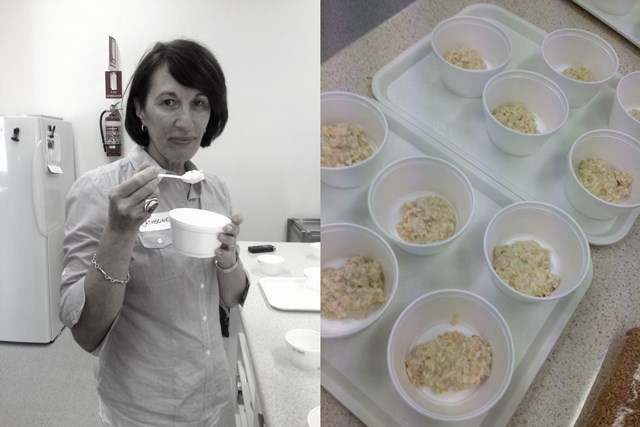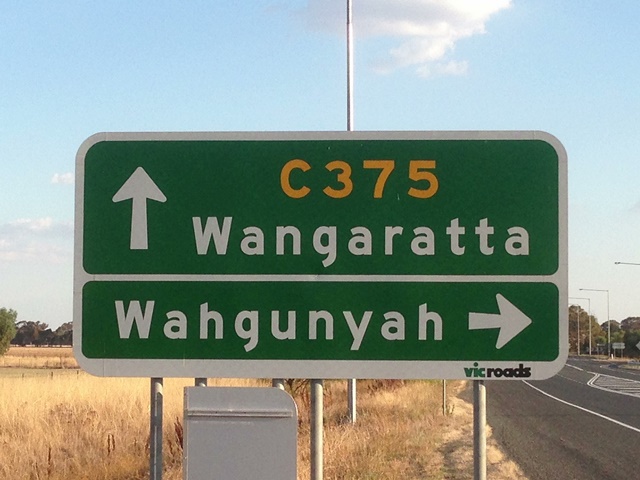- Home
- Blog
- Super Foods
- My visit to UNCLE TOBYS oats facility
My visit to UNCLE TOBYS oats facility
Written by Catherine Saxelby
on Friday, 22 March 2013.
Tagged: breakfast, breakfast cereals, carbohydrates, family fare, glycemic index, grains, healthy cooking, healthy heart, low GI, super foods, technology

I was lucky enough to score an invite to see how UNCLE TOBYS rolled oats are made. As one of a small group of media dietitians we got to see the whole oaty process from the harvested grain to the finished product being packed into the familiar 'red box'.
I had been trying to get down to Wahgunyah in Victoria for a few years as I'm a great fan of oats and have ranked them as one of my top 20 super foods. I love oats for breakfast as a creamy porridge in winter or a chewy muesli at other times, or Bircher muesli with milk, sultanas and grated fresh apple.
I also love its great nutrition profile, being high in fibre and beta-glucans (good if you have high cholesterol) and a top source of B vitamins, healthy fats, plus the minerals phosphorus, potassium and magnesium (which helps steady the rhythm of the heart).
UNCLE TOBYS "Open Doors" Cereal Masterclass
We were flown to the UNCLE TOBYS "Open Doors" Cereal Masterclass at their Research and Development facility in Rutherglen. They held nothing back. I learned how UNCLE TOBYS manufactures their cereals; how they manage their oat program and meet with the local farmers who grow their oats; how they store and kiln-dry the oats and the challenges facing them as a modern-day manufacturer.
Note – they're after 'milling oats' which are different to oats grown for feeding stock or other non-food uses.

I watched the oats go into the kiln-drier where they are heated and lightly toasted. There is some loss of the heat-sensitive B vitamins with the toasting step but there's still enough retained for oats to be a good source for our nutrition – you have to weigh up the convenience of the rolling as opposed to having to boil up whole grains from scratch, I guess. Next they are steamed to increase their moisture content before being flattened between two steel rollers to become the familiar flat round oats we all know.
I followed them along a conveyer belt line where they were dried, then measured into set weights automatically and fed straight down into the reassembled cardboard boxes.
I asked a ton of questions. From what variety of oats are used (the main one is called Mitika) to how thick the oats are (it's a tiny 0.5 mm), to how does cooking or pre-soaking affect its nutrition, taste and texture.
On Consumer Trends at Breakfast
In their Test Kitchen, we got to taste-test different oat varieties and compare them side by side. Funny, I had never paid much attention to my porridge oats before but I now realise I don't like cooked oats that look 'greyish' nor ones that leave a muddy pool of liquid at the bottom of my cereal bowl.

Like everyone, I also want smooth, creamy oats that hold together and are an attractive rich-cream colour! This is something UNCLE TOBYS works hard to achieve through their network of farmers and their long-term oat breeding program.
In their factory, we watched fascinated - with earplugs, hair nets and steel-capped boots on – as UNCLE TOBYS other cereals trundled by on conveyer lines or popped out of drying ovens.
I learned how Vita-Brits were made from whole grain wheat. They start with whole grains of wheat which are then steamed, rolled out flat, then 'squashed' between two plates into a large 'sheet' of layers of flattened grains.

Rollers cut the huge sheets into strips which are then sliced into those popular wheat biscuit slices that we love for breakfast – with milk in a bowl or spread with yeast spread or jam. Amazing.
A 24/7 operation
The UNCLE TOBYS factory runs 24 hours a day, 7 days a week, so workers come on and off on regular shifts and raw ingredients need to be always ready to come into production – a huge undertaking for a country town in Australia.
UNCLE TOBYS is owned by Cereal Partners Worldwide, a joint venture between Nestlé and General Mills. Yes, it's part of a huge international food corporation but at its heart is a love and appreciation coupled with an expertise in breakfast cereals, something I hadn't quite grasped before.
You may also be interested in...
References / External articles
Foodwatch
The Good Stuff
The Boring Stuff
© 2025 Foodwatch Australia. All rights reserved
Website by Joomstore eCommerce






